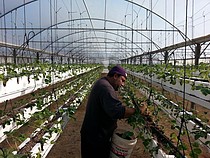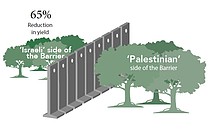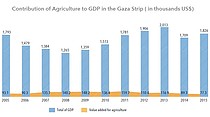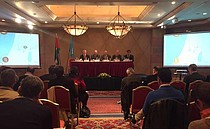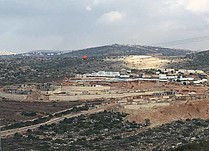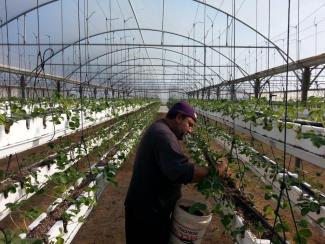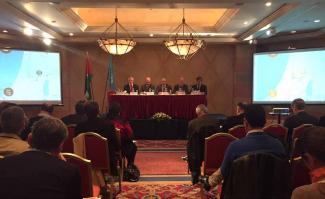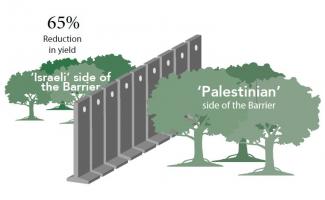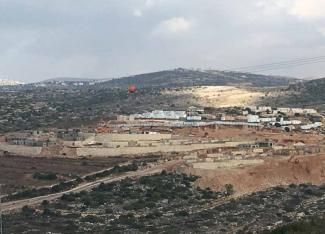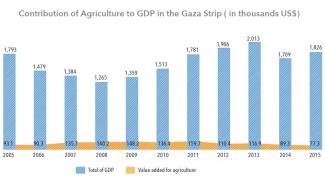In his 23 November briefing to the Security Council, the Under-Secretary General for Humanitarian Affairs, Stephen O’Brien, warned of the increasing challenges facing the humanitarian community and its ability to deliver assistance to Palestinians in need.
The Monthly Humanitarian Bulletin | December 2016
During 2016 olive harvest season, Israeli settlers vandalized 210 olive trees down from 801 during the 2015 season. Revenues from the export/transfer of produce out of Gaza in 2016 increased by 80 per cent compared to 2015, half of those recorded in 2007, when the blockade was imposed. About 70 per cent of the requested $ 547 million in donor funding for the 2017 Humanitarian Response Plan launched in December target Gaza. The de facto expansion of Talmon- Nahliel settlement bloc has undermined the livelihoods of six nearby Palestinian villages.
In his 23 November briefing to the Security Council, the Under-Secretary General for Humanitarian Affairs, Stephen O’Brien, warned of the increasing challenges facing the humanitarian community and its ability to deliver assistance to Palestinians in need.
The 2016 olive harvest season, which lasted from 15 October to the end of November, was reported to have proceeded relatively smoothly. However, sporadic incidents of settler violence and restrictions on access to olive groves behind the Barrier and near Israeli settlements continue to pose challenges for Palestinian farmers.
The main export/transfer season for Gaza’s agricultural produce began in December. The volume of produce leaving Gaza has risen since late 2014, following the easing of Israeli restrictions on the exit of goods to markets in the West Bank and Israel. Revenues in 2016 (up to 8 December) totaled $11.9 million, an increase of almost 80 per cent compared with 2015 ($6.7 million) and more than five times higher than 2014 revenues ($2.2 million). Despite this improvement, 2016 revenues are about half of those recorded in 2007 when the blockade was imposed.
On 19 December 2016, the UN Coordinator for Humanitarian Aid and Development Activities, Robert Piper, and the Minister of Social Development of the State of Palestine, Dr Ibrahim Al-Shaer, launched the 2017 Humanitarian Response Plan (HRP) for the OPT.
Between 1997 and 2002, six new residential settlements, labeled new neighborhoods or outposts, were established on the hilltops surrounding Talmon. All but one (Nerya) were established without a building permit or formal authorization. Despite this, in recent years the Israeli authorities have initiated multiple planning processes to retroactively make these settlements legal under Israeli law.
In this document
On 19 December 2016, the UN Coordinator for Humanitarian Aid and Development Activities, Robert Piper, and the Minister of Social Development of the State of Palestine, Dr Ibrahim Al-Shaer, launched the 2017 Humanitarian Response Plan (HRP) for the oPt.
The 2016 olive harvest season, which lasted from 15 October to the end of November, was reported to have proceeded relatively smoothly. However, sporadic incidents of settler violence and restrictions on access to olive groves behind the Barrier and near Israeli settlements continue to pose challenges for Palestinian farmers.
Between 1997 and 2002, six new residential settlements, labeled new neighborhoods or outposts, were established on the hilltops surrounding Talmon. All but one (Nerya) were established without a building permit or formal authorization. Despite this, in recent years the Israeli authorities have initiated multiple planning processes to retroactively make these settlements legal under Israeli law.
The main export/transfer season for Gaza’s agricultural produce began in December. The volume of produce leaving Gaza has risen since late 2014, following the easing of Israeli restrictions on the exit of goods to markets in the West Bank and Israel. Revenues in 2016 (up to 8 December) totaled $11.9 million, an increase of almost 80 per cent compared with 2015 ($6.7 million) and more than five times higher than 2014 revenues ($2.2 million). Despite this improvement, 2016 revenues are about half of those recorded in 2007 when the blockade was imposed.
